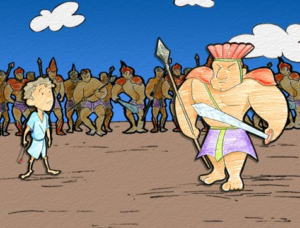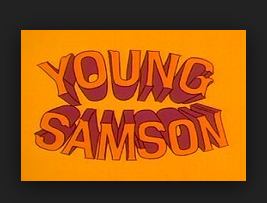Tag: story
Brake All the Rules To Be Someone to Understand
Do you remember your experiences with selecting a puppy when you were a child? Our family always had a dog, so I remember several such occasions and they included someone to understand. This is a story I was told a while back about one such memory that we would like to share:

I believe that you can get everything in life you want …
if you will just help enough other people get what they want.
– Zig Zigler
A farmer had some puppies he needed to sell.
He painted a sign advertising the 4 pups and set about nailing it to a post on the edge of his yard. As he was driving the last nail into the post, he felt a tug on his overalls. He looked down into the eyes of a little boy.
Related post: The Story of Tank the Dog or Is It Reggie?
Mister, he said, I want to buy one of your puppies.
Well, said the farmer, as he rubbed the sweat off the back of his neck, these puppies come from fine parents and cost a good deal of money.
The boy dropped his head for a moment.
Then reaching deep into his pocket, he pulled out a handful of change and held it up to the farmer.
I’ve got thirty-nine cents. Is that enough to take a look?
Sure, said the farmer. And with that he let out a whistle. Here, Dolly! he called.
Out from the doghouse and down the ramp ran Dolly followed by four little balls of fur.
The little boy pressed his face against the chain link fence. His eyes danced with delight. As the dogs made their way to the fence, the little boy noticed something else stirring inside the doghouse.
Slowly another little ball appeared this one noticeably smaller. Down the ramp it slid. Then in a somewhat awkward manner, the little pup began hobbling toward the others, doing its best to catch up.
I want that one, the little boy said, pointing to the runt. The farmer knelt down at the boy’s side and said, Son, you don’t want that puppy. He will never be able to run and play with you like these other dogs would.
With that the little boy stepped back from the fence, reached down, and began rolling up one leg of his trousers.
In doing so he revealed a steel brace running down both sides of his leg attaching itself to a specially made shoe.

Looking back up at the farmer, he said, You see sir, I don’t run too well myself, and he will need someone to understand.
With tears in his eyes, the farmer reached down and picked up the little pup.
Holding it carefully he handed it to the little boy.

How much? asked the little boy. No charge, answered the farmer, There’s no charge for love.
The world is full of people who need someone to understand …
My takeaway from this story?
Do what you can, with what you have, wherever you happen to be …
Remember … sometimes reality is too complex. Stories do a good job of giving meaning that can be remembered.
Would you like another interesting story? Never Give Up Your Dreams
Do you have any stories from your experience vault that you could share with this community?
Need some help in capturing more customers from your marketing or advertising campaigns? Looking for creative ideas to help the differentiation with potential customers?
All you get is what you bring to the fight. And that fight gets better every day you learn and apply new ideas.
When things are not what you want them to be, what’s most important is your next step.
Test. Learn. Improve. Repeat.
Are you devoting enough energy improving your enthusiasm?
Do you have a lesson about making your motivation better you can share with this community? Have any questions or comments to add in the section below?
Mike Schoultz is the founder of Digital Spark Marketing, a digital marketing and customer service agency. With 40 years of business experience, he writes about topics that relate to improving the performance of business. Go to Amazon to obtain a copy of his latest book, Exploring New Age Marketing. It focuses on using the best examples to teach new age marketing … lots to learn. Find them on G+, Twitter, and LinkedIn.
Digital Spark Marketing will stretch your thinking and your ability to adapt to change. We also provide some fun and inspiration along the way.
More inspirational stories from Digital Spark Marketing’s Library:
A Story About Living as Told by a Six Year Old Boy
Surprising Story Lessons on Making a Difference
Mike Schoultz is a digital marketing and customer service expert. With 48 years of business experience, he consults on and writes about topics to help improve the performance of small business. Find him on G+, Facebook, Twitter, Digital Spark Marketing, and LinkedIn.
When Your Matter of Perspective Backfires – the Story of the Starfish
I heard this simple, yet profound, story on a matter of perspective in making a difference the other day … and would like to share it:

Once upon a time, there was a wise man that used to go to the ocean to do his writing. He had a habit of walking on the beach before he started his work.

One day, as he was walking along the shore, he looked down the beach and saw a human figure moving like a dancer. As a result, he walked faster to catch up with this individual.
As he got closer, he noticed that the figure was that so a young man and he was not dancing after all. He was reaching down to the shore, picking up small objects and throwing them into the ocean.
As he approached, he called out “Good morning. May I ask what it is that you are doing?”
The young man paused, looked up, and replied “Throwing starfish into the ocean.”
“I must ask, then, why are you throwing starfish into the ocean?” asked the somewhat startled writer.
To this, the young man replied, “The sun is up and the tide is going out. If I don’t throw them in, they’ll die.”
Upon hearing this, the writer commented, “But, young man, do you not realize that there are miles and miles of beach and there are starfish along every mile? You can’t possibly make a difference!”

At this, the young man bent down, picked up yet another starfish, and threw it into the ocean. As it sank into the ocean, he said: “It made a difference for that one.”
My takeaway from this story?
Do what you can, with what you have, where you are … and a difference will be made.
Credit to Loren Eisely … source unknown.
All you get is what you bring to the fight. And that fight gets better every day you learn and apply new ideas.
When things are not what you want them to be, what’s most important is your next step.
Test. Learn. Improve. Repeat.
Are you devoting enough energy to improving your enthusiasm?
Do you have a lesson about making your motivation better you can share with this community? Have any questions or comments to add in the section below?
Digital Spark Marketing will stretch your thinking and your ability to adapt to change. We also provide some fun and inspiration along the way.
More inspirational stories from Digital Spark Marketing’s Library:
A Story About Living as Told by a Six-Year-Old Boy
Never Give Up Your Dreams
The Story of Tank the Dog or Is It Reggie?
Surprising Story Lessons on Making a Difference
Mike Schoultz is a digital marketing and customer service expert. With 48 years of business experience, he consults on and writes about topics to help improve the performance of small business. Find him on Facebook, Twitter, Digital Spark Marketing, and LinkedIn.
A Story for the Ages: Samson and Goliath
It’s a story of something that happened 3,000 years ago when the Kingdom of Israel was in its infancy. And it takes place in an area in what is now Israel. It is a story about small versus mighty. Or is it a story for the ages: Samson and Goliath?

But more importantly in the history of this region, it’s had a real strategic function.
It is the means by which hostile armies on the coastal plain find their way into the mountains and threaten those living in the mountains.
And 3,000 years ago, that’s exactly what happened.
But remember, the truth is that ideas need ecosystems to support them and that doesn’t happen overnight. To make an idea viable in the real world it needs to continually connect outward, gaining adherents and widening its original context. That takes more than an initial epiphany. It takes the will to make the idea subservient to its purpose.
Let’s examine this story in more detail. The Philistines, who are the biggest of enemies of the Kingdom of Israel, are living in the coastal plain.
They’re originally from Crete. They’re a seafaring people. And they may start to make their way through one of the valleys of the Shephelah up into the mountains.
What they want to do is occupy the highland area right by Bethlehem and split the Kingdom of Israel in two.
And the Kingdom of Israel, which is headed by King Saul, obviously catches wind of this, and Saul brings his army down from the mountains to confront the Philistines in the Valley of Elah. It was one of the most beautiful of the valleys of the Shephelah.
And the Israelites dig in along the northern ridge, and the Philistines dig in along the southern ridge, and the two armies just sit there for weeks and stare at each other, because they’re deadlocked.
Neither can attack the other because to attack the other side you’ve got to come down the mountain into the valley and then up the other side, and you’re completely exposed.
So finally, to break the deadlock, the Philistines send their mightiest warrior down into the valley floor, and he calls out, and he says to the Israelites, “Send your mightiest warrior down, and we’ll have this out, just the two of us.”
This was a tradition in ancient warfare called single combat. It was a way of settling disputes without incurring the bloodshed of a major battle.
And the Philistine who is sent down, their mighty warrior, is a giant. He’s 6 foot 9. He’s outfitted head to toe in this glittering bronze armor, and he’s got a sword, and he’s got a javelin, and he’s got his spear.
He is terrifying. And he’s so terrified that none of the Israelite soldiers want to fight him.
It’s a death wish, right? There’s no way they think they can take him.
And finally, the only person who will come forward is this young shepherd boy, and he goes up to Saul, and he says, “I’ll fight him.”

And Saul says, “You can’t fight him. That’s ridiculous. You’re this kid. This is this mighty warrior.”
But the shepherd is adamant. He says, “No, no, no, you don’t understand, I have been defending my flock against lions and wolves for years. I think I can do it.”
And Saul has no choice. He’s got no one else who’s come forward.
So he says, “All right.” And then he turns to the kid, and he says, “But you’ve got to wear this armor. You can’t go as you are.”
So he tries to give the shepherd his armor, and the shepherd says, “No.” He says, “I can’t wear this stuff.”
So he reaches down instead on the ground and picks up five stones and puts them in his shepherd’s bag and starts to walk down the mountainside to meet the giant.
And the giant sees this figure approaching, and calls out, “Come to me so I can feed your flesh to the birds of the heavens and the beasts of the field.”
And the shepherd boy takes one of his stones out of his pocket, puts it in his sling and rolls it around and lets it fly and it hits the giant right between the eyes. Right there, in his most vulnerable spot and he falls either dead or unconscious.
Then the shepherd boy runs up and takes his sword and cuts off his head, and the Philistines see this, and they turn, and they just run.
And of course, the name of the giant is Goliath, and the name of the shepherd boy is David. So David, in that story, is supposed to be the underdog, right?
In fact, that term, David, and Goliath has entered our language as a metaphor for improbable victories by some weak party over someone far stronger.
Now, why do we call David an underdog?
Well, we call him an underdog because he’s a kid, a little kid, and Goliath is this big, strong giant.
We also call him an underdog because Goliath is an experienced warrior, and David is just a shepherd.
But most importantly, we call him an underdog because all he has is — it’s that Goliath is outfitted with all of this modern weaponry, this glittering coat of armor and a sword and javelin and a spear, and all David has is this sling.

Well, let’s start there with the phrase “All David has is this sling,” because that’s the first mistake that we make.
In ancient warfare, there are three kinds of warriors. There’s cavalry, men on horseback and with chariots.
There’s heavy infantry, which are foot soldiers, armed foot soldiers with swords and shields and some armor.
And there’s artillery, and artillery is archers, but, more importantly, slingers.
And a slinger is someone who has a leather pouch with two long cords attached to it.
They put a projectile, either a rock or a lead ball, inside the pouch. They whirl it around like this, and they let one of the cords go, and the effect is to send the projectile forward towards its target.
That’s what David has, and it’s important to understand that that sling is not a slingshot. It’s not this, right? It’s not a child’s toy.
It’s, in fact, an incredibly devastating weapon.
When David rolls it around like this, he’s turning the sling around probably at six or seven revolutions per second.
That means that when the rock is released, it’s going forward really fast, probably 35 meters per second. That’s substantially faster than a baseball thrown by even the finest of baseball pitchers.
If you go back over the history of ancient warfare, you will find time and time again that slingers were the decisive factor against infantry in one kind of battle or another.
But David has absolutely no expectations. He’s not going to fight him that way.
Why would he? He’s a shepherd.
He’s spent his entire career using a sling to defend his flock against lions and wolves. That’s where his strength lies.
There’s a second piece of this that’s important. It’s not just that we misunderstand David and his choice of weaponry.
It’s also that we profoundly misunderstand Goliath. Goliath is not what he seems to be.
There are all kinds of hints of this in the Biblical text, things that are in retrospect quite puzzling and don’t square with his image as this mighty warrior.
So to begin with, the Bible says that Goliath is led onto the valley floor by an attendant.
Now that is weird, right? Here is this mighty warrior challenging the Israelites to one-on-one combat. Why is he being led by the hand by some young boy, presumably, to the point of combat?
Secondly, the Bible story makes special note of how slowly Goliath moves, another odd thing to say when you’re describing the mightiest warrior known to man at that point.
And then there’s this whole weird thing about how long it takes Goliath to react to the sight of David.
So David’s coming down the mountain, and he’s clearly not preparing for hand-to-hand combat. There is nothing about him that says, “I am about to fight you like this.”
He’s not even carrying a sword. Why does Goliath not react to that? It’s as if he’s oblivious to what’s going on that day. And then there’s that strange comment he makes to David: “Am I a dog that you should come to me with sticks?”
Sticks? David only has one stick.
So the Israelites up on the mountain ridge looking down on him thought he was this extraordinarily powerful foe.
What they didn’t understand was that the very thing that was the source of his apparent strength was also the source of his greatest weakness.
The bottom line
And there is, I think, in that, a very important lesson for all of us. Giants are not as strong and powerful as they seem. And sometimes the shepherd boy has a sling in his pocket.

All you get is what you bring to the fight. And that fight gets better every day you learn and apply new ideas.
When things are not what you want them to be, what’s most important is your next step.
Test. Learn. Improve. Repeat.
Are you devoting enough energy to innovating your social media strategy?
Digital Spark Marketing will stretch your thinking and your ability to adapt to change. We also provide some fun and inspiration along the way.
More leadership material from Digital Spark Marketing’s Library:
Build an Effective Team by Being a Talent Hound
Success Enablers of Highly Creative Leaders
Secrets to Becoming a Remarkably Mindful Leader
Mike Schoultz is a digital marketing and customer service expert. With 48 years of business experience, he consults on and writes about topics to help improve the performance of small business. Find him on Facebook, Twitter, Digital Spark Marketing, and LinkedIn.
Difference in Perception … the Devil is the Details
Mark Twain once said: It ain’t what you don’t know that will hurt you. It’s what you know for sure that just ain’t so. A difference in perception?

Do the details guide you in distinguishing reality versus perception? Or do they create a difference in perception? What do you think? Maybe this story will help elaborate.

Disney knew the value of a story.
Let’s define each term to be sure we are on the same page. Perception is how you see things. Reality is how things really are.
An important difference to you? Yes.
Here is a short story to illustrate why:
A heart surgeon took his car to his local garage for a regular service, where he usually exchanged a little friendly banter with the owner, a very skilled but not especially wealthy mechanic.
Another story: The Story of Tank the Dog or Is It Reggie?
“So tell me,” says the mechanic, “I’ve been wondering about what we both do for a living, and how much more you get paid than me…”
“Yes?” says the surgeon.
“Well look at this,” says the mechanic, as he worked on a big complicated BMW engine, “I check how it’s running, open it up, fix the valves, and put it all back together so it works well as new.
We basically do the same job, don’t we? And yet you are paid ten times what I am – how do you explain that?”

The surgeon thought for a moment, and smiling gently, replied quietly to the mechanic,
“Try it with the engine running.”
Very subtle but significant difference between perception and reality in this story, no?
Key takeaways:
Do you think both the heart surgeon and the mechanic love what they do? More than likely yes.
If the mechanic lived with the perception that his job was essentially the same as the heart surgeon and he was therefore underpaid, would he be happy? Probably not.
If we focus on details between perception and reality, we will ultimately live a happier and more content live.
Another great story: Never Give Up Your Dreams
A big deal, yes?




